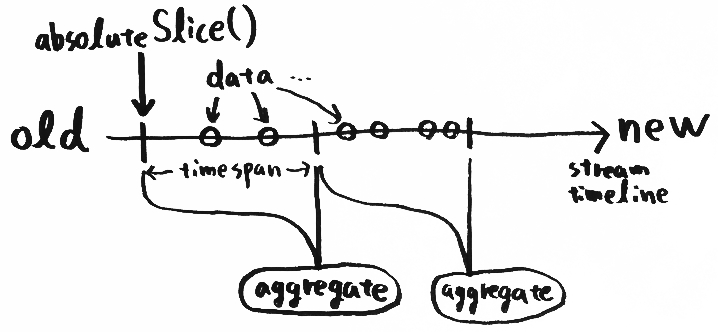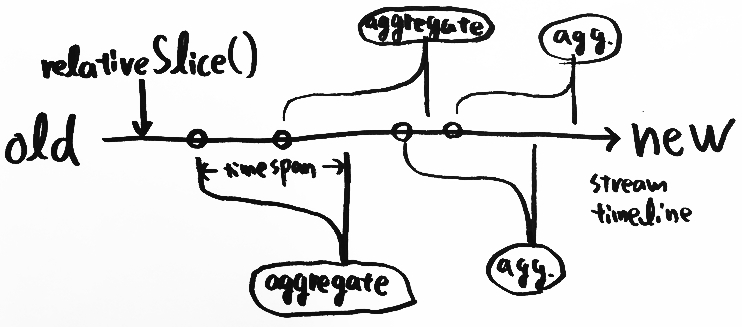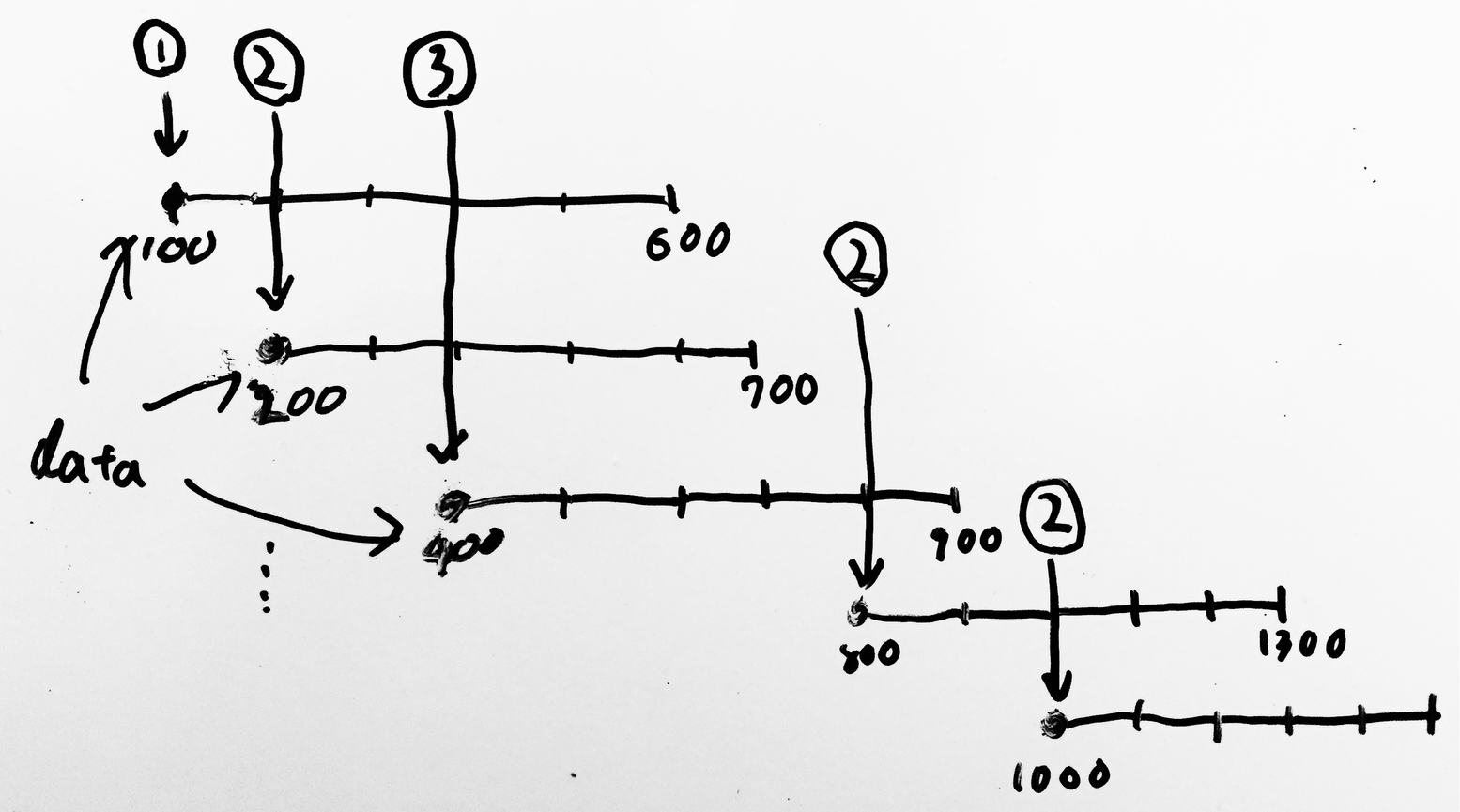sandglass v1.0.0
#sandglassWIP
Aggregates data stream timeline as time window.
#Usage
var Sandglass = require( 'sandglass' );
var sandglass = new Sandglass();#Sandglass
##emit( data );
Send data to all SandStreams.
##absoluteSlice( timespan );
Slices data stream timeline with timespan and aggregates each slice of data stream. Next aggregation starts after one aggregation ends, and another one starts again and again.

Arguments
- timespan(Number): slice size (millisecond).
Returns
(sandStream): Fires aggregate event after stream aggregation.
emitter.on( 'aggregate', callback );
callback gets an array of streaming data.
Example
var sandStream = sandglass.absoluteSlice( 1000 );
setTimeout( function() { sandglass.emit( 1 ) }, 500 );
setTimeout( function() { sandglass.emit( 2 ) }, 800 );
setTimeout( function() { sandglass.emit( 3 ) }, 1700 );
setTimeout( function() { sandglass.emit( 4 ) }, 2100 );
setTimeout( function() { sandglass.emit( 5 ) }, 2300 );
setTimeout( function() { sandglass.emit( 6 ) }, 5000 );
sandStream.on( 'aggregate', function ( agg ) {
console.log( '@agg:', agg );
// => [ 1, 2, 3 ] (5 second later)
// => [ 4, 5 ] (10 second later)
// => [ 6 ] (15 second later)
// => [] (20 second later)
// ...
} );##relativeSlice( timespan );
Slices data stream timeline with timespan and aggregates each slice of data stream. The aggregation starts at each incoming data, and it ends after it takes the timespan. (Same as delayedCount)

Arguments
- timespan(Number): slice size (millisecond).
Returns
(sandStream): Fires aggregate event after stream aggregation.
emitter.on( 'aggregate', callback );
callback gets an array of streaming data.
Example
var sandStream = sandglass.absoluteSlice( 1000 );
setTimeout( function() { sandglass.emit( 1 ) }, 500 );
setTimeout( function() { sandglass.emit( 2 ) }, 800 );
setTimeout( function() { sandglass.emit( 3 ) }, 1700 );
setTimeout( function() { sandglass.emit( 4 ) }, 2100 );
setTimeout( function() { sandglass.emit( 5 ) }, 2300 );
setTimeout( function() { sandglass.emit( 6 ) }, 5000 );
sandStream.on( 'aggregate', function ( agg ) {
console.log( '@agg:', agg );
// => [ 1, 2 ] ( 1.5 second later )
// => [ 2, 3 ] ( 1.8 second later )
// => [ 3, 4, 5 ] ( 2.7 second later )
// => [ 4, 5 ] ( 3.1 second later )
// => [ 5 ] ( 3.3 second later )
// => [ 6 ] ( 6 second later )
} );##liveCount( timespan );
When data incomes, 'liveCount' reserve the data. At the same time 'liveCount' sends data as aggregation which was reserved untill at that time. Each data is disposed after it takes timespan.

Arguments
- timespan(Number): slice size (millisecond).
Returns
(sandStream): Fires aggregate event after stream aggregation.
emitter.on( 'aggregate', callback );
callback gets an array of reserved streaming data.
##delayedCount( timespan );
Aliase of relativeSlice (Same as relativeSlice). When data incomes, 'delayedCount' reserve the data. After it takes timespan, 'delayedCount' sends data as aggregation which was reserved untill at that time, and then the data is disposed.
#SandStream
##on( event, listener );
Set event listener.
sandStream.on( 'aggregate', function( agg ) {...} )
##off( event, listener );
Remove event listener.
##stop(); Stop aggregation. GC works.
##other methods see EventEmitter2
11 years ago